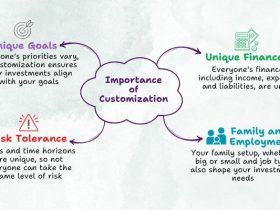The world of veterinary care is changing. Pet owners increasingly seek more for their furry companions. Traditional methods alone sometimes fall short. That’s where holistic and integrative care come in. These approaches combine conventional care with alternative options like acupuncture, nutrition, and massage. You might wonder why this shift is happening. Essentially, pet owners demand comprehensive care options. They want to address their pets’ physical and emotional needs. A veterinarian in North York explained that this trend helps animals recover faster and stay healthier. It also strengthens bonds between pets and their humans, ensuring comfort and well-being. Clinics adopting these methods show a commitment to advancing pet care. They focus on treating the whole animal, not just symptoms. This approach resonates with pet owners who want to explore varied treatment paths. By considering the entire spectrum of pet health, clinics meet the rising expectations of caring families.
Understanding Holistic and Integrative Care
The terms “holistic” and “integrative” often create confusion. Holistic care looks at the big picture. It considers every aspect of an animal’s life, including diet, environment, and mental wellness. Integrative care blends the best of conventional and alternative practices. It tailors strategies to the unique needs of each pet.
Key Elements of Holistic and Integrative Care
- Nutrition: Proper nutrition strengthens health. Many clinics now offer tailored diet plans focusing on natural ingredients.
- Acupuncture: This technique helps with pain management and improves energy flow.
- Massage and Physical Therapy: Enhances mobility and reduces stress in recovering animals.
- Herbal Medicine: Uses herbal remedies to complement treatments.
Why the Shift?
Pet owners increasingly value these options. They seek choices that align with their beliefs about health and wellness. A study by the National Center for Biotechnology Information found that alternative therapies can improve outcomes when combined with traditional treatments. Additionally, these methods often involve fewer side effects, making them appealing for chronic conditions.
Benefits for Pets and Owners
Integrative care benefits pets in many ways. It offers a more personalized approach that targets the root cause of health issues. This focus can lead to quicker recovery and lasting health. For owners, it provides peace of mind knowing their pets receive thoughtful care. The relationship between the pet and owner can grow stronger as a result.
Comparing Traditional and Integrative Care
| Aspect | Traditional Care | Integrative Care |
|---|---|---|
| Focus | Symptoms | Whole Health |
| Techniques | Medication/Surgery | Combination of Methods |
| Side Effects | Possible | Fewer |
| Owner Involvement | Limited | Active |
Making the Right Choice
Choosing between traditional and integrative care depends on various factors. Consider your pet’s condition, personality, and past responses to treatments. Discuss options with your veterinarian. Many clinics now offer integrative care as part of their services. This allows for flexibility and choice in developing a suitable care plan.
Conclusion
The trend toward holistic and integrative care in veterinary clinics is more than a passing phase. It’s a response to an evolving understanding of pet health. Pet owners recognize the benefits of a whole-health approach. By bridging conventional and alternative methods, clinics offer more than treatment. They offer hope and improved quality of life for pets. The journey towards comprehensive pet care continues, guided by evidence and empathy.









